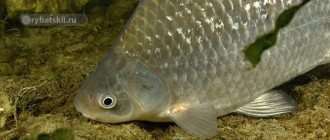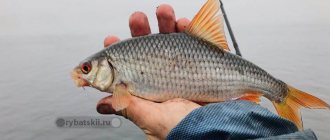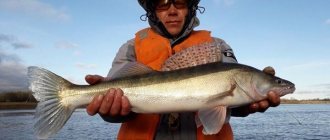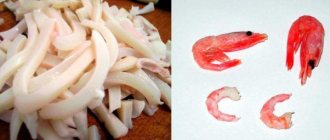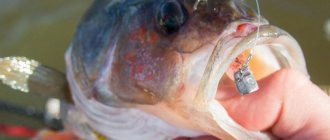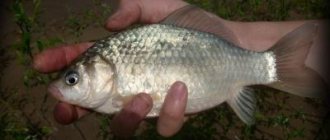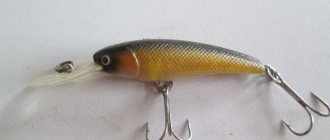Autumn fishing
It is pleasant and light, and has many advantages for the fisherman.
Each fishing season has its own special pleasures. Those inexperienced fishermen who think that autumn is a hopeless time of calm for fishing
.
The fish that bite in the fall, of course, are not the same as in the summer, and fishing tactics become unique. But it is autumn fishing that can please you with breams of record size and weight, beautiful pike-perch and magnificent perches. In autumn, as a rule, the biting nature of many fish changes - this is facilitated by short days, cool air and low water temperature in reservoirs. Fishing in the fall
is a completely different fishing tactics compared to summer. For example, bait in the autumn season completely loses its effectiveness - fish swim throughout the reservoir in search of food, and therefore it is extremely difficult to lure it to the fishing spot. You should fish in a variety of places in the fall, and special attention should be paid to the baits - in the fall the baits should be of animal origin.
Content
- 1 Autumn months 1.1 Fishing in September
- 1.2 Fishing in October
- 1.3 Fishing in November
- 5.1 Fishing for crucian carp in autumn
Autumn months
Fishing in autumn
Fishing in September
The long-awaited time has come - autumn. When fishing (in autumn), everyone dresses warmly, because you know that it’s already cool near the water, and even more so when it’s windy and cloudy. But sometimes it is quite fresh in the morning. At this time, that is, at the beginning of autumn, all the fish go to depth. For everyone, fishing in the fall means catching pike, because its feeding begins in September. Spinning fishermen should have more strength to go fishing productively.
You should know that in the fall pike take well with live bait and lures. The well-known predator is quite well caught on any living creature. At the beginning of autumn, catching it is just a pleasure for yourself.
If you fish at depth, then remember that the best way to catch pike is with vertical lures. This bait is sometimes capable of catching not only pike, but also pike perch.
Fishing in October
All the leaves on the trees have already fallen. All aquatic plants freeze, because there are no conditions for them (it’s very cold). Slush begins, which changes with frost. It becomes much worse to fish. Although spinners continue to fish, because the pike feeding has not yet ended.
Unfortunately, fishing in the fall takes place at great depths and only with spoons. All experienced fishermen know that during frosts it is very difficult to fish with a spinning rod, because the rings are covered with ice and the line on the reel freezes. That’s why use a spinning rod and its gear as a track, and you can also use girders and mugs. In order to fish in the fall during this period, it is best to use a float rod, vertical lures and only with live bait. During this period (that is, in October), perch “fattens” well. It is quite easy to catch at this time. For example, for jigs, for mugs, for worms or for fry. With the help of a float rod it is easy to catch silver bream, roach and so on. But if it’s in the wiring, then it’s a dace. Also, it is good to catch bloodworms and worms, but only in good weather, ruffe, silver crucian carp, ide and chub are caught a little less. When fishing in the fall, it is very rare to catch such a fish with a bottom fishing rod. At the end of the month, burbot will continue to be caught well, but ide is a rarity (at this time). At this time ice is already appearing. It will be best if you fish only on quiet rivers and lakes. It is best to fish in small forest lakes.
Fishing in November
Winter is coming. Quite often in November there is snow or prolonged rain. Now, fishing in the fall is not particularly attractive. After all, everyone knows that persistent frosts are beginning. Ice appears on all bodies of water. It is best not to take risks during the first ice. At this time the ice is not yet stable. That is why it is undesirable to go fishing, because there is a huge risk. It is best to go out on the ice when the ice thickness is 6 centimeters. In order to find out the thickness, take a small twig with a knot. Hook this knot onto the ice. In turn, make a mark on the twig. After this, measure the distance from the knot to the note on the twig. This will indicate the thickness of the ice. It is very important to remember that white ice is not as strong as black ice. Maybe. You know that during the first ice, fish try to gather in shallow water where there is a grass edge. In November, this is the best place for fishing. But be careful, because fishing in autumn in such places is dangerous. It will be good if you are on clean ice near the grass. But remember that large and timid fish can see you from a distance of 4 meters, so they will avoid a strange place. So use something to darken the ice. This way the fish will feel safe. Use only bright lures. When vertically trolling, use narrow and long spoons that are equipped with a disguised tee. Once the freeze-up begins, fish begin to be caught throughout the day. Fishing in November is an interesting and mysterious thing, I recommend that you familiarize yourself in more detail with who bites what in November and, in general, who to catch at this time of year. Fishing in the fall is most successful in cloudy, relatively warm, and calm weather.
Night fishing gear
Theoretically, you can fish at night using any daytime gear, but in practice, with some of them this task becomes much more complicated. To make it easier to solve, various tricks and technical devices are used, mainly aimed at ensuring proper bite signaling. Perhaps they are worth considering first.
"Fireflies"
This is the name given to the elements of equipment that emit light. They are attached to floats, rod tips and bells - both temporarily and permanently, and can be chemical, electronic or phosphorescent.
Chemical fireflies
Photo 4. Chemical fireflies in a bag, completely ready for use.
The first category is small plastic capsules produced by the fishing industry, containing a solution of oxalic acid ester and an ampoule of hydrogen peroxide. When light is needed, the capsule bends, the ampoule cracks, the substances mix and react, as a result of which hordes of photons are emitted. Scientists call this phenomenon “chemiluminescence.”

Photo 5. The glow is the result of a chemical reaction.
This thing shines for about 12-15 hours, which is enough for the whole summer night. Its weight is small, so it does not affect the sensitivity of the float much.
Electronic fireflies
Our electronic fireflies are mostly homemade, although overseas industry produces them in quite large quantities. They consist of a low-power LED and a pair of small batteries. The easiest way to make one is from a lighter with a flashlight. It is also quite possible to make a float with this filling, for example, from a cocktail tube or cotton candy.

Photo 6. LED float for night fishing (industrial production).
Such devices shine until the batteries run out. But they are definitely enough for one night - tested in practice. Unfortunately, due to the mass of the batteries, the sensitivity of the float suffers greatly, and the process of loading it becomes more complicated.
"Fireflies" from a phosphorescent nipple
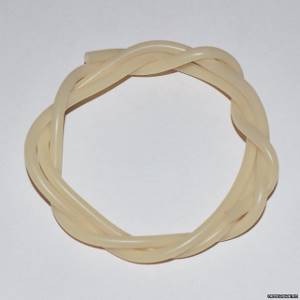
Photo 7. Phosphorescent nipple.
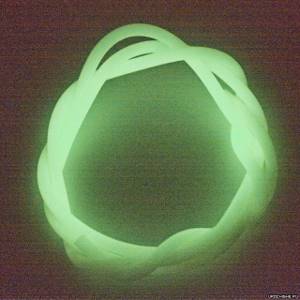
Photo 8. The same one, shining in pitch darkness after charging with a flash.
Such “fireflies” are made from scraps of a “light-accumulating” nipple, which is periodically available in fishing shops. It is enough to put them on the float antenna. they shine quite well.
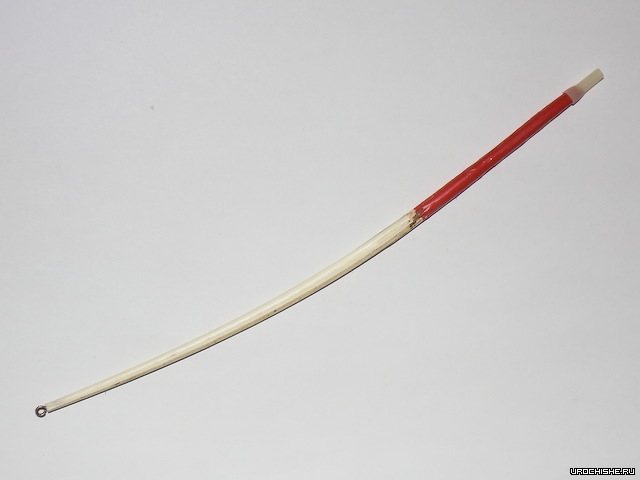
Photo 9. Goose float, adapted for night fishing. On the right end there is a firefly from the nipple.
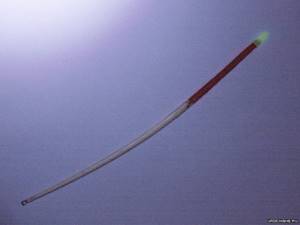
Photo 10. This is what will happen if you dim the light.
This firefly is very good, but nevertheless it has one drawback. The nipple must be periodically recharged with a light source, for example a flashlight. The brighter this source, the better. The time between recharges depends on the quality of the nipple. We came across some that glowed clearly for almost an hour, and some that needed to be recharged every 15-20 minutes. However, of all the fireflies for night fishing, the nipple ones are the lightest. Accordingly, floats equipped with them have maximum sensitivity.
Donka
This gear is most suitable for night fishing - even in a completely daytime version. Its obligatory attribute - a bell - will provide the fisherman with the necessary bite alarm. Some enthusiasts complement it with a firefly, which in my opinion is unnecessary, although depending on who you are. For me, it’s better to put a dozen of the simplest tricks.
If fishing is carried out exclusively on donkeys, the fisherman can easily relax, having tea by the fire, or while away the time in a tent listening to the radio. A suddenly ringing bell will notify him of a bite, and by the time the fisherman approaches the tackle, the fish will have time to detect it.
Float rod
Night fishing with a “float” is impossible without a float equipped with a firefly. Practice has shown that homemade options are best suited here, because store-bought ones do not have sufficient sensitivity.
You won’t be able to relax when float fishing at night, as you constantly have to monitor the float. And if during the day you don’t need to strain your eyesight to do this, then at night it’s the opposite. The fact that by the morning the fisherman’s eyes will be “in a bunch” is a fact, this should be immediately taken into account when planning to go float fishing at night.
But on the other hand, unlike the donkey, only the “float” allows you to fish for particularly finicky fish.
Ship
One of those night gear that does not need a bite alarm (and is purely river-based, among other things). All bites on the boat are registered tactilely - by a sudden “jerk from the hands” or by strange changes in the tension of the line. You can also detect a bite by the sound of a splash in the area of the leashes (an experienced fisherman can distinguish this sound by ear from the usual fish “splash”). In general, it would be a good idea to periodically drive the boat to the fishing point and check the leads with a second (long-range) flashlight.
In Soviet times, the industry produced large inertial reels equipped with a ratchet, which was of no use as a clutch, but which could be successfully used as a bite alarm for a boat. Fortunately, the usual size of the tackle’s float planes (approximately 40 by 20 cm) created a tension that was just barely enough to overpower the tongue. And the rattle held the boat quite well while it was simply loitering in the current. But, as soon as the fish bit, the ratchet was triggered by the jerk, and with a squeal (whoever heard it knows) it released the fishing line.
Spinning
The most difficult tackle in night fishing. And no tricks can make its use easier, except perhaps a night vision device. However, if a fisherman has straight hands, he will quickly become adept at throwing bait “blindly” and achieve quite acceptable results in night spinning.
By the way, about baits. The best of them for night conditions (at least at first) are considered to be surface ones - wobblers, poppers, etc. However, if the bottom in the fishing area is sandy or clayey - without snags and accumulations of stones, then it is quite possible to “tap” it and jig heads [2]
There is even specialized night fishing for pike perch using jigs, used by domestic and foreign fishermen, as well as using non-hooking spinners.
Baits for fishing in autumn
Among homemade baits for fishing in the fall, mixtures of crackers with oatmeal with the addition of salt, sugar and sand or earth as a diluent are good. Instead of flavorings, it is better to add bloodworms or maggots. The consistency of bait for fishing in the fall is very important. It would seem that a ball of bait lowered to the bottom would somehow become saturated with water and fall apart. But that's not true. It has been noticed that in cold water it is better if the ball quickly disintegrates and “muddy”. When fishing in the current, it is advisable to use stationary feeders so that the bait is slowly washed out.
The tactics of using bait during autumn fishing become extremely important. When the fish activity is low, the amount of bait and the frequency of throwing should be small. For fishing in the fall, half a kilogram of bait is enough, and it is better to add this amount in very small doses during the first hour of fishing. Additional feeding is advisable only after the bite has clearly subsided. If bloodworms are used as bait, then you will need no more than 100–200 g for fishing.
As winter approaches, fishing turns into a hunt for every fish. In most cases, neither plant-based groundbaits nor plant-based baits are of interest to large fish. Even bleak gradually stops reacting to crackers, and you can tease it only with “clean” bloodworms.
In these conditions, the choice of bait becomes very important, since baits such as pearl barley, “babblehead” or canned corn cease to interest the fish. When traditional baits are not successful, you have to try fishing baits that few people use in the summer or spring. But first, about the tested baits.
Fishing in the fall, what to fish with in the fall
When going fishing in the fall, you need to focus on certain fish baits suitable for autumn fishing, from which baits of plant origin begin to fall out; it is also necessary to change the composition of baits for fishing in the fall. The most effective bait compositions for autumn fishing are those that are created specifically for cold water. Presumably this is due to the threshold of fish’s sensitivity to “odors”, and perhaps with the rate of diffusion of the flavoring in water, when a situation can arise in which the local concentration of the additive directly on the bait will be very high, which is tantamount to an overdose. Each type of fish has its own water temperature limit at which they switch to an active lifestyle and diet. And the compositions of baits on both sides of this border differ from each other. This is understood by leading domestic or “GV” baits, which produce a number of specialized baits for fishing specifically for cold water.
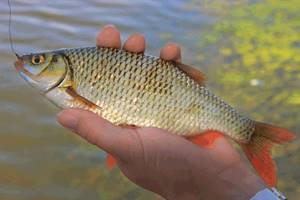
Lures for fishing in autumn
Traditional baits in the fall do not meet the expectations of fishermen, so you should switch to specialized baits. For example, you can use bloodworms. As for maggots, in the autumn you should select small larvae, which must be placed on the hook one at a time. Sometimes, at the time of year we are considering, a good result is given by a larva that is already beginning to pupate.
By the end of autumn, a good solution would be to use the larvae of the common flies (“cuttlefish”). When the “Indian summer” ends, you should start preparing “burdock”. The use of burdock moth, which is ideal for catching bleak located at a fairly large depth, has produced good results. You can also note such a purely autumn bait as the bark beetle, which is very respected by fish.
Regarding artificial baits, we can highlight spoons, which are well suited for catching perch and pike. If you use classic turntables, then you should give preference to Mepps and Blue Fox. Towards the end of autumn, it is advisable to switch to larger-sized baits, since the fish eat off before winter and therefore do not respond to small baits. In this case, you can pay attention to the so-called “jerkbait” - this is a bait that is gaining more and more popularity. It should be borne in mind that it differs in volume and weight, so you will need a fishing rod of sufficient power and a multiplier.
Finding fish in autumn
Fish stops in autumn In autumn, fish move to places that are distinguished by a large number of drooping algae, where aquatic insects and larvae are found that have lost shelter at this time of year.
At the beginning of autumn, while the underwater thickets are still green, you can find a hungry pike on the border of the reeds. Somewhat later, when small species of fish move to depth and, accordingly, the pike moves after it, you can try to find edges or hills on the bottom that characterize the predator’s sites. If your fishing destination is pike perch or burbot, then you should look for them in holes or at depths due to snags.
There is always a period in autumn when warm days delight us again. At this time, white fish moves closer to the edge of the shore, hoping to profit from aquatic insects or larvae that live in snags or on algae. As the temperature drops, the algae begin to die off and the fish's habitats change. The fish form schools and go deeper.
Autumn is characterized by cold winds and prolonged rains. At the same time, the activity of the fish is still quite high, since, for example, predators are entering the autumn feeding season. Almost until late autumn, near steep banks where there are overhanging trees, you can achieve good fishing results. Particularly good places are defined by coastal creeks, which are covered with fallen leaves. Here you can catch roach, perch, chub or rudd.
As for reservoirs, here you can find bream or silver bream both on channel edges and on tables with an uneven bottom. Small rivers, as well as reservoirs, can be subject to significant changes in water, which leads to a change in fish habitat. In autumn there is usually vertical movement of water. At the same time, rotting vegetation forces fish to move to clean areas of the reservoir.
Bite time
A very important point, given the significant duration of the cold night. I can’t speak for all places and bodies of water – they’re all different. I only know that according to my favorite points at depths of 4-5 m, the biting period is quite wide. Roughly speaking, from ten in the evening to four in the morning .
Then, as a rule, trouble begins with timid bites, a decrease in the size of the fish caught, or even a complete cessation of biting.
And everything seems to be determined, if not for one circumstance - not so often, but it still happens that around 6 o’clock in the morning the biggest bream are caught . In any case, it is not clear why the bream does not bite throughout the night. Does it come from a certain distance to feed at certain hours, or does it feed at specific times and stay nearby the rest of the time? Unclear.
Fishing in autumn
Fishing for crucian carp in autumn
Autumn has come - we are catching crucian carp. There is an opinion among people that fishing for crucian carp in the fall does not bring any results, but this opinion is only partly true. Fishing in the fall should take into account that crucian carp changes its behavior tactics. It gradually moves away from the coastline, so fishing with a float rod should fade into the background.
Catching crucian carp in the fall will be effective when casting long distances using a donkey equipped with a feeder. For this option, gear configured for catching bream is perfect. It has a very simple structure: a reel, a short fishing rod, a regular or sliding feeder and several leashes with hooks. Hooks should be attached depending on the selected feeder (the hook is placed above the feeder if it is solid and attached from below using a tee if the feeder is sliding). You can also catch crucian carp on a fishing rod with a sliding float using long-casting tactics.
Usually, fishing for crucian carp in the fall is very effective, since crucian carp have gained weight over the summer and very large specimens can be caught on the fishing rod.
Carp fishing in autumn
With the onset of autumn, carp begin a period of active feeding, especially on days when the weather is calm and warm. Catching carp in the fall has its own characteristics and this should be remembered when going on autumn fishing. If bad weather is raging outside the window, then the carp's feeding subsides, and sometimes it can stop completely. Moreover, during night frosts, carp often experience such a phenomenon as deactivation of the bite. With the arrival of late autumn, carp begin to bite only closer to noon. At the same time, the fish practically do not walk around the reservoir, sliding into wintering pits. In reservoirs, the water becomes quite clear at this time of year, but large carp do not like this too much and try to go deeper.
Fishing for carp in the fall does not cause much enthusiasm among most carp anglers and this is not surprising (the fish bite little, rain, frost). But, even if it sounds strange, fishing in the fall gives a persistent carp angler a good chance of bringing home another big trophy.
Since the carp, having rolled into the wintering hole, will not come out until the onset of spring warmth, the fisherman only has to find deep holes in the reservoir where carp are caught in the summer. There will be fish there, guaranteed. In addition, the chances that a large specimen will take an abandoned bait are 80%! Large individuals will not allow small ones to eat their prey first!
When going carp fishing, take care of the bait. For this purpose, it is advisable to take fresh crayfish meat, earthworms (large), boilies or bread baits. As for the fishing line, if possible, it should be fluorocarbon, and the hooks should only be sharp.
Pike fishing in autumn
By autumn, pike (both young and adult individuals) begin the period of the most intense and prolonged feeding. During this time (September-October), pike can be caught with great success anywhere, in any way and with any bait. Pike fishing in the fall is characterized by the fact that the fish will grab small vibrating tails and heavy large oscillating spoons with equal greed. In this case, neither the depth at which you will lead the bait nor the pace of the retrieve itself will play a special role. But experienced fishermen, for whom fishing in the fall has become an invariable pastime, know that any body of water still has its own special unspoken rules: in some places a wobbler becomes the most effective and catchy, and in others it is better to fish for pike on a so-called “spinner” " In addition, every spinning player has his favorite baits in his arsenal, which he prefers at every opportunity. Therefore, when discussing the topic of “catching pike in the fall,” it is impossible to give any clear recommendations regarding when and where it is best to use certain baits, well, perhaps, except for one. Fishing for pike with live bait in mid-autumn is not particularly profitable, since it is quite difficult to catch, and besides, fish in cold water, due to their passivity, are practically motionless on the hook. In conclusion, let's say the following. In autumn, pike do not stand in certain places, therefore, using a spoon, the angler will have time to fish a large area of the reservoir and catch a couple of large pikes. To learn more about pike fishing in the fall, I advise you to read the article fishing for pike with a spinning rod.
Fishing for pike perch in autumn
The behavior of pike perch differs from other predators in that during daylight it stays deep, and during dark it comes out to hunt on the shallows. Due to the narrow body structure, pike perch prefers to hunt narrow fish with a thin body. A potentially catchy wobbler for pike perch also has a corresponding design. The best wiring when catching pike perch with a wobbler is horizontal, uniform or with slight accelerations.
Lures for catching pike perch in the fall:
- In autumn, schools of pike perch feed in the area of deep edges. For fishing during this period, you will need sinking or neutral wobblers.
- The sinking wobbler “Magnum” (Rapala) allows you to successfully catch a predator at a depth of 2.7 m to 7.5 m. After casting, it is allowed to sink to the bottom, and then reeled back up. During short pauses, the wobbler is forced to glide downwards.
- When catching pike perch with a neutral, deep-plunging wobbler (for example, X-Rap Magnum, Rapala), we advise you to perform slow retrieval with short jerks during stops for the sake of impulsive movements of the bait.
- Twisters and vibrotails are used to catch fish on deep edges, in places where there is a flooded snag.
Perch fishing in autumn
In the fall, perch fishing is excellent in lakes as soon as the grass has fallen and the water has become clearer. As it gets colder, it breaks up into smaller flocks and leaves the shallows towards snags and cliffs. The perch bite almost completely stops in November.
The best baits for perch in the fall:
- The twister is from 2.5 to 5 cm long. It is important that it works even with the slowest wiring and when dropped. Mounted on a jig head or offset hook. Color is not of primary importance. Retrieving – very slow (dragging along the bottom), sweeping “step”
- Twitching wobblers 4-7 cm long. The wiring is jerky. Works well in shallow places when the perch is not very active.
- Popper. Don't forget about him. Perch is excellently caught on poppers until the freeze-up. The main thing is to choose the color and wiring.
- Passive soft baits. Paralon fish, worms, etc.
- Vibrating tail from 2.5 to 5 cm long on a small jig head.
Fish that are caught at night
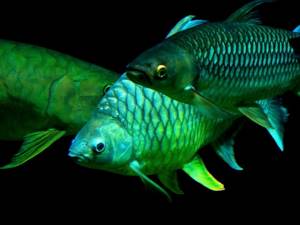
Just as people have their “larks” and “owls,” so among representatives of the freshwater ichthyofauna there are “day owls” and “night owls.” There are quite a few of the latter. Why do they choose the night? There are several reasons for this:
- Many diurnal fish are food items for predators. They are easier to catch in the dark, which encourages hunters to stick to the night mode.
- On the other hand, there are predatory fish that are mainly active during daylight hours. This forces some of their potential victims to hide during the day and come out to feed at night.
- The older the fish, the more experienced it is, and therefore the more careful and suspicious it is. Night is the most favorable time for her. As mentioned above, large specimens of many fish prefer to lead a purely nocturnal lifestyle.
- On summer days, many reservoirs are noisy: people swim and fish, jet skis and boats rush back and forth. At this time, the underwater fauna prefers to hide in shelters. At night, the long-awaited silence comes, and the fish come out to feed.
- The regime of ichthyofauna is also affected by the weather, or more precisely, the summer heat. It forces the fish to fall into torpor during the day, when the water temperature reaches its maximum. At night the water cools, conditions become more favorable and the fish become active.
Chub
Being a predator, the chub hunts while its potential victims (minnows, bleaks) are sleeping. On the other hand, frogs, which are his favorite food, become active at night.
At night, medium and large nocturnal insects fly out - moths, cutworms and others. In the summer there are a lot of them, to be convinced of this - just watch the street lamp on the outskirts of the city. These insects often fall into the water and feed on fish.
The maximum activity of the night chub is usually confined to the hours after sunset and before sunrise. Large fish appear in shallow rifts closer to the morning, where they hunt for small fish.
The best and most popular tackle for catching chub at night is a boat. Although, there are some enthusiasts who fish for this fish in the dark with a spinning rod using surface bait.
In spring, early summer and autumn, chub are also successfully caught using night baits - using live bait, crayfish meat or May beetle larvae.
Ide
A relative of the chub, the ide is no less fond of the night. In the dark, he goes out onto the shallows and underwater hills and approaches the shore. Usually it is caught with bottom gear, but at the height of summer the fish often rises to the surface of the water and, like a chub, is caught on a boat, as well as on a spinning rod - small wobblers.
Roach
In many reservoirs and almost all rivers, in addition to the usual “chebak” no more than 20 cm long, there is also a large form of roach, whose weight starts from about half a kilo and on average corresponds to a kilogram. During the day, if such a fish bites, it is as an exception. The main activity time of large roach is from sunset to dawn, and the older the fish, the more it adheres to this principle.
They catch night roach using bottom and float gear. On rivers it is quite possible to catch it on a boat, but this happens (in our area at least) very rarely. The thing is that roach usually stands at the bottom at night.
Carp
Night is the time for large crucian carp. And in some reservoirs this fish is not active at all during the day, and only bites in the dark. The best tackle for catching midnight crucian carp is a donka (preferably with a feeder). If you have a special float, you can catch it with a regular fishing rod.
Carp
It is considered a “round-the-clock” fish. At night, the chances of catching the “master of the pond” - trophy carp, which are more active at this time and often approach almost the very shore, increase noticeably.
The same applies to wild carp - carp.
Bream
The older you are, the more midnight you get. It has been noticed that the larger the bream, the more it adheres to the dark time of day.
On rivers it is fished in pits - with bottom gear. Float fishing is also possible on ponds, but only where the depth immediately begins to be good (at least 2-3 meters). For example, from lake rafting. Bream is quite cautious, and usually tries not to go into open shallow water.
It is very useful to study the bottom topography in the fishing area before night fishing. This way you can “calculate” the fish’s path - this will allow you not to use bait and not scare it again.
Gustera
Everything that concerns bream also applies to her, though - with some exceptions. Unlike its larger brother, the silver bream, it moves very little at night. Therefore, to successfully catch it, you need to know the places where it is most densely concentrated.
Tench
The traditional time for tench fishing is late evening. As seasoned catchers of this fish assure - a couple of hours before sunset and within an hour after it. Well, in the morning - at dawn. However, few people know that tench is a 24-hour fish. It feeds constantly (until it sleeps), but usually stands in deep places - far from the shore. Tench enter shallow water “according to a schedule” - in the morning and evening.
However, in many reservoirs this fish does not hesitate to move towards the shore even at night. Especially a large one for that.
Of all the cases known to me of catching tench weighing 2-3 kg, at least three out of four occurred closer to midnight.
The best tackle for catching night tench is a donka.
Som
Known nocturnal predator. After sunset, it rises from the river depths and raids shallow waters, where it destroys small fish and frogs in countless quantities.
Night is the best time to catch catfish from the shore using bottom gear.
Burbot
Another predator that is exclusively nocturnal. It is somewhat reminiscent in its hunting method to catfish (and in its food items), but occupies a slightly different niche. And unlike the latter, it is not caught in the summer.
The best time to catch burbot is in the fall, shortly before the freeze-up begins. In inclement, chilly weather, this fish is successfully caught using bottom gear.
Zander
Pike perch is a 24-hour predator, but it clearly has a special predilection for twilight and night time. For this, he has all the necessary adaptations - a well-developed lateral line, and eyes “with increased light sensitivity.”
Night fishing for pike perch is usually carried out using spinning rods - wobblers and jig baits. Some fishermen prefer donks.
Taimen
This noble hunter of taiga rivers cannot be ignored. Catching taimen with an artificial mouse is an integral part of Siberian night fishing. In principle, taimen hunt all day long, but darkness is its main ally during raids on riffles and shallows.
Graylings
All types of grayling can fatten not only during the day, but also during the short (especially during the bright northern) June nights. And large individuals - weighing well over a kilogram - in some rivers even adopt the “taimen” habits, and may well be caught on a small spinning or fly fishing bait that imitates a mouse.
Bycatch
Now it’s worth listing those types of fish that cannot be called one hundred percent “night owls,” but which, nevertheless, can be caught during night fishing.
Pike
“Officially” a day fish. This is what all fishing reference books say at least unanimously. But a logical question arises - why does it, no, no, and even get caught on a boat (on a frog or live bait) when fishing for chub at night?
Apparently, the pike did not read these reference books.
Asp
Just like pike, it is a daytime predator, and just like it, it periodically gets caught on a boat or spinning rod in the middle of the night. A very interesting fact is that “night” asps are noticeably larger than “daytime” asps.
Rudd
Another daytime fish, which, as an exception, can be caught at night.
Perch
A diurnal predator, despite its close relationship with pike perch. Nevertheless, sometimes it hunts in the dark, and on some rivers a certain regularity has even been noticed in this.
Ruff
In principle, about a particularly large ruffe, we can say with confidence that this is a purely nocturnal fish. However, such individuals are very rare, so it is easier to classify them as bycatch.
